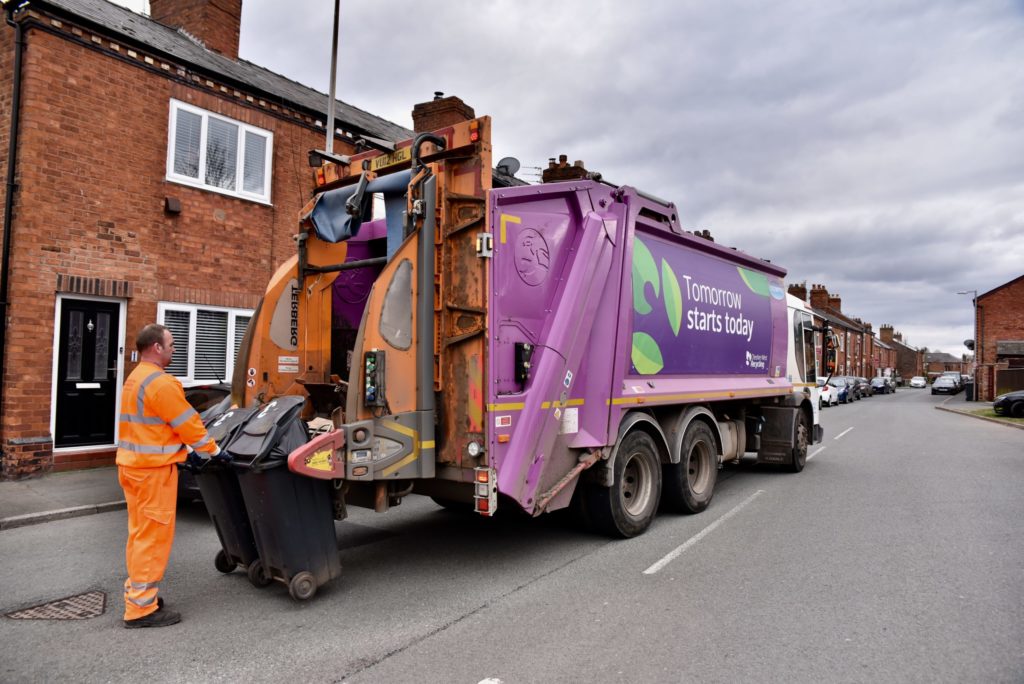The concept is developed in what is the fifth of a series of books produced by Biffa Waste Services, inspired by the analysis and research work driven by the waste management company's development director, Peter Jones.
Running to 105 pages, this latest book – published on October 21 2002, is also available on the company's website at www.biffa.co.uk
Route map
In the forward to the book, Martin Bettington, Biffa managing director, notes that Future Perfect “provides a possible route map which charts how our world might be – operationally and financially for waste management in 2020. It is designed to present a robust message to government – emphasising that more strategic approaches are long overdue.”
The book has three key stages: one is a look at the different ways waste could be handled between now and the year 2020; then it looks at what Mr Jones terms the “blockages” which both aid and hinder the achievement of solutions; and thirdly the importance of waste to industry and the public.
The Options
According to Future Perfect, option one of high recycling and high landfill is the cheapest but more likely only to be a transition phase. This is on the basis that the Landfill Directive and financial liability requirements and questions about the sustainability of landfill will all lead to a contraction of capacity of landfill.
Future/Option Landfill Composted Energy Recovered
(= recycled) Mtpa
Today
65% 2% 3% 30% 120
1 High landfill and recycling 42% 8% 12% 38% 120
2 High energy and recycling 10% 15% 35% 40% 120
3 High composting and recycling 10% 35% 15% 40% 120
4 High energy and composting 8% 36% 31% 25% 361
Option two of high recycling and high energy from waste is the second most expensive but seen by Biffa as “the most commercial realistic” given future probable trends in the value of recovered materials and renewable energy, either in response to possible resource taxation or to hardening real prices offered from tradable permits, especially on energy.
High composting with high recycling – option three – is the most expensive and also raises big questions about the ability of the planning system to cope with necessary growth in the number of plants. Biffa estimate that if this approach was adopted each of the 360 large landfill sites – handling today an average of 300,000 tonnes per annum (tpa) will need to be replaced by between 5 and 10 energy composting or recycling facilities.
Option four is high energy recovery and high composting, a route which could be followed if the waste industry was to handle large volumes of agricultural and forestry waste.
Isle of Wight
All the options are examined in great detail in appendix one of the book. The message is clear, doing nothing is not an option and landfill will have a reduced role in the future. The book shies away from spelling out the option to be pursued but does note that high recycling and high energy are the most commercially viable. The Isle of Wight, where Biffa has an integrated waste management contract which includes an incinerator, is given as a case study.
Blockages
Attention then turns to some of the obstacles that need to be overcome so options can be achieved. In the book Mr Jones is adamant about the need for what he terms “the actors in the drama” to act. He sees them currently as blockages which need urgent attention.
- Government departments: must move away from treating the environment on a cross cutting basis in terms of energy, industry policy, transport, health and education and policing.
- Environment Agency: needs significant retraining and a big shift into a more cohesive integrated approach able to handle new facilities. Privatisation of some duties may be needed.
- Industry: needs to act on producer responsibility.
- Local authorities: need to develop cohesive waste strategy plans. 300 landfill sites could close and be replaced by as many as 3,000 smaller sites.
- The Treasury: needs to make some fundamental decisions and need to recognise that direct costs of £1 billion to £2 billion a year are looming. “Creating inefficient collection systems by passing the responsibility for solutions to hundreds of overloaded local authorities through central state subsidies is not in the interest of national efficiency.”
- Professional institutions, such as the Chartered Institute of Waste Management are seen as a silent professional constituency which needs to be consulted more proactively.
- NGOs. These are seen as occupying the moral high ground but have a growing responsibility to develop proper objectivity and buy-in when it comes to delivering economically as well as environmentally realistic options.
The Yellow Brick Road
All this leads to the Yellow Brick Road. A picture of a winding road towards a sunny 2020 is drawn, but there are three gates in the way. The first is open, the second broken and in need of repair and the third is “public dissemination and acceptance”.
This is where the vision of Future Perfect starts to become clear. There is no hesitation on the part of Biffa. Current performance by regulators, central government and across waste producers is erratic in an atmosphere of “distrust, suspicion, ignorance and failed policy initiatives without any overarching understanding of a common binding framework”. The book warns that the waste issue will become more of an economic and political hot potato than it is today. And, a lack of political support for integrated environmental management within the Cabinet is cited as a problem.
In terms of the Yellow Brick Road, the first gate is open and labelled “Technology”.
A key argument in the book is that technology does exist to handle waste. Mr Jones says that while new systems continue to arrive, and try to make the jump from laboratory scale to commercial operation, it is clear that there are no technical barriers to achieving a high level of excellence in recovering resources from waste.
“What is needed,” he says, “is the economic infrastructure and scale to stimulate technology application within a framework of robust regulatory control, monitoring and reporting.”
The second gate – broken and in need of repair – signifies government and regulators. Ramshackle and cobbled together, these consist of competing objectives from difference government departments and a regulator which lacks funds for key tasks.
The book argues for sectorally driven strategies based on distinct supply chains with support of the government, the regulator and the waste industry.
The third gate is barred and bolted and, says Biffa, reflects the public which is “bewitched, muddled and bewildered”. This is caused by warring between government, industry, the waste sector and NGOs.Mr Jones argues that there is a need to define a broad area of consensus so there is a more comprehensive, constructive and understandable package of options offered to the public as a whole.
MRFs and kerbside collection
The book provides a mass of data and commentary, touching on all aspects of waste management. On recycling, Biffa's opinion that it is best to separate materials as early as possible in the recovery stage.
“The householder is ideally placed to act in a way in which dry recyclables and organic materials are kept out of the waste, reducing both contamination and the quantity of residual waste for final disposal. This can capture a high level of the available materials in a form which would be welcomed by many processors circumventing any need for MRFs, which tend to be both labour and capital intensive.”
Conclusion
The book provides so much data that it will undoubtedly be an important contribution to the Strategy Unit review which is due to be published in November 2002. Future Perfect hints, cajoles and promotes many approaches to better waste management.
It is both a wake-up call and a tool to deliver a more perfect future. But, no one solution is actively promoted. As the book says, “This publication has been produced with the objective of enlightening that debate – not in terms of defining the ideal option (there isn't one) – but rather in terms of bringing all the relevant facts together under the most comprehensive umbrella so far produced in this country to date”.











Subscribe for free